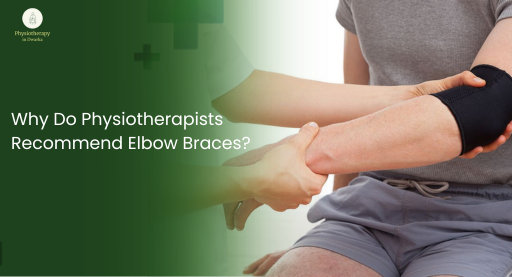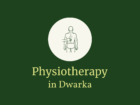If you’ve been dealing with persistent elbow pain that flares up during simple tasks like lifting, typing, or even shaking hands, you’re not alone. This discomfort is often caused by tennis elbow, a common overuse injury that affects thousands of people not just tennis players. While rest and rehab are key parts of recovery, many physiotherapists recommend tennis elbow support as an effective way to manage symptoms and promote healing. Why Physiotherapists Recommend Tennis Elbow Support (And How to Use It Right)
But why is a brace or strap such a go-to solution among professionals? It’s more than just a quick fix. When used correctly, the right elbow support can reduce strain on the affected tendons, ease pain, and protect against further injury making it a powerful addition to your recovery toolkit. In this article, we’ll explore the science behind elbow braces, how they work, and what to look for when choosing one for your daily needs.
How to Use Tennis Elbow Support for Maximum Results
Slapping on a brace without knowing the proper way to use it? That’s like wearing shoes on the wrong feet, technically possible, but not helping anyone. So, here’s how to actually use tennis elbow support the right way.
- Get Fitted for Elbow Brace
First thing’s first don’t guess. A poorly fitted brace can do more harm than good. Ideally, see a physio or sports therapist to help you get fitted for an elbow brace tailored to your size, needs, and lifestyle.
- Position Matters A Lot
The support should sit about an inch below the elbow joint, directly over the muscle that’s causing you grief. Tight enough to give pressure, but not so snug it cuts off circulation.
- When to Wear It?
- During aggravating activities like lifting, typing, or tennis (obviously)
- At work, if your job involves repetitive arm motions
- Occasionally overnight, if advised by your physio
- What to Avoid
- Wearing it 24/7 it’s not armor
- Ignoring continued pain seek advice
- Choosing fashion over function (no rhinestones, please

Why Do Physiotherapists Recommend Elbow Braces?
Physiotherapists don’t toss braces around lightly. They’ve seen how the right support used correctly can be a game changer. Elbow braces or straps are designed to:
1 Reduce Strain on Injured Tendons
By applying targeted compression, a good tennis elbow strap helps reduce tension where it hurts the most.
2 Promote Healing and Minimize Movement
Elbow supports limit painful motion, allowing inflamed tissue to rest without completely immobilizing the joint.
3 Prevent Re-Injury During Activity
Wearing a brace during high-risk movements (like typing, lifting, or playing sports) protects the joint and reduces the chance of worsening the condition.
Pro Tip: Think of the brace as a support actor helpful, but not a solo healer. It works best alongside physiotherapy and rest.

How to Wear Tennis Elbow Support the Right Way
Wearing an elbow brace wrong is like tying your shoes backward technically possible, but definitely not helping.
1. Get the Right Fit
The best elbow support for tendonitis is one that fits your arm snugly without cutting off circulation. Avoid generic “one-size-fits-all” braces if possible.
Search Tip: Try “adjustable tennis elbow strap for forearm pain” to find options with custom tension straps.
2. Position It Correctly
The strap should sit 1-2 inches below the elbow joint, directly over the muscle belly not the bony part of your elbow.
3. Wear It at the Right Times
During activities that aggravate pain (typing, lifting, playing)
At work, if you use your arm repetitively
Occasionally at night but only if recommended by your physiotherapist
4. Avoid These Common Mistakes
Wearing the brace 24/7
Ignoring ongoing pain (always consult your physio)
Choosing looks over function (skip the flashy designs and focus on comfort + performance)
Will the pain go away completely with just a brace?
It can help significantly, but full recovery usually involves a mix of rest, strengthening, and technique adjustments, especially for those who caused the injury through repetitive movement. Tennis elbow support can play a key role in managing symptoms, but it’s not a standalone cure it’s most effective when combined with other treatment strategies.
FAQs
Q. How long should I wear tennis elbow support each day?
Start by wearing it during activities that trigger pain. Some people wear it for a few hours a day, while others may need it longer. Always follow your physiotherapist’s advice.
Q. Can I sleep with an elbow brace on?
Only if your physiotherapist recommends it. Sleeping with a brace isn’t always necessary and can sometimes restrict natural movement
Q. Do I still need physiotherapy if I use a brace?
Absolutely. The brace helps manage symptoms, but physio addresses the root cause with exercises and manual therapy. Think of the brace as a supporting actor not the lead role.
Q. Is it okay to buy a brace online?
Sure, as long as it fits properly and meets quality standards. Still, it’s smart to get fitted for elbow brace options with a professional at least once, so you know what works best for you.
Conclusion
So, why physiotherapists recommend tennis elbow support really boils down to three things: it eases strain, improves function, and speeds up recovery when used correctly. It’s not a cure-all, but it’s a simple, cost-effective step toward living pain-free. Whether you’re dealing with nagging discomfort from desk work or rebounding from an intense match, the right brace paired with smart physio can make all the difference.
Don’t wait for the pain to bench you permanently. Take action, get properly fitted, and explore both physiotherapist recommended elbow braces and affordable tennis elbow supports that suit your daily needs. Your elbow will thank you.

